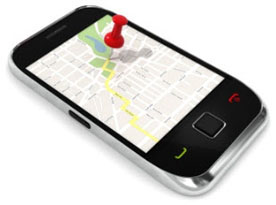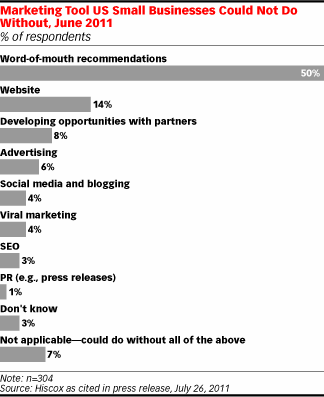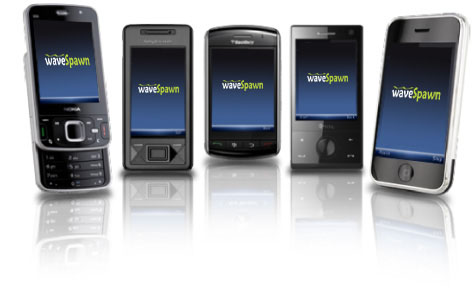Quick Response codes and marketing
 By now, you’ve probably seen a number of QR or Quick Response codes on various ads and packaging – similar to the one on the right. You may have wondered what it does or why it’s there.
By now, you’ve probably seen a number of QR or Quick Response codes on various ads and packaging – similar to the one on the right. You may have wondered what it does or why it’s there.
QR codes were originally invented in Japan by Denso for industrial bar codes on packaging for warehousing and production purposes. Since it is open source technology, it has gained wide spread, international adoption. QR codes can embed much more information than traditional (linear) barcodes. In fact, they are increasingly being used in retail to quickly send a user from a print ad or sign to a specific URL which has detailed product information.
Used strategically, QR codes can help support a number of marketing objectives. Think in terms of linking customers from an invoice or receipt directly to a customer service survey. We’ve all received receipts that say go to some random URL and enter a number to see if you’ve won something. Now that connection – between print and web – can be one step closer.
Another example – say you are in an electronic store looking at a flat screen TV. If there’s a QR code to scan, you may be able to immediately access customer reviews and ratings to help your purchasing decision.
From a marketing perspective you should always aim to track usage and determine how to best utilize QR codes for your business. With the immeasurable possibilities, businesses large and small can leverage the QR technology in creative ways.
There are a number of free QR generators available online. You can simply enter a URL, video, vCard, text, or any other information to embed. Some allow you to personalize with colors, etc.
Depending on what smart phone you use, there are several QR Readers on the market. Here’s a free QR Reader for the iPhone. Some are free, but include ads, some have more features than others.


 Marketing to mobile phones
Marketing to mobile phones As Facebook continues to roll out new features and functionality, it’s important to be aware of what these changes are and how they may affect your use. While many people have been buzzing about the Facebook Timeline, it is scheduled to roll out over the next several weeks. For those who can’t wait, this article walks you through the 8 steps to
As Facebook continues to roll out new features and functionality, it’s important to be aware of what these changes are and how they may affect your use. While many people have been buzzing about the Facebook Timeline, it is scheduled to roll out over the next several weeks. For those who can’t wait, this article walks you through the 8 steps to 
 These days, small business owners have a lot of marketing options to consider. There are a number of traditional marketing platforms including newspaper ads, print ads, billboards, direct mail, and TV commercials. Then combine these with a slew of digital and social media marketing options such as Facebook, Twitter, LinkedIn, YouTube, blogging, a
These days, small business owners have a lot of marketing options to consider. There are a number of traditional marketing platforms including newspaper ads, print ads, billboards, direct mail, and TV commercials. Then combine these with a slew of digital and social media marketing options such as Facebook, Twitter, LinkedIn, YouTube, blogging, a  As an iPhone user, it’s exciting to be involved in the fastest growing market segment in the world – mobile application development. There are endless opportunities for companies to leverage the reach of smart phones and mobile applications. Custom mobile development can help creatively market your business and distinguish your products/services from competitors. As the number of smart phone users continues to rise, mobile apps can help you reach new audiences, encourage loyalty, and accelerate growth in an innovative format.
As an iPhone user, it’s exciting to be involved in the fastest growing market segment in the world – mobile application development. There are endless opportunities for companies to leverage the reach of smart phones and mobile applications. Custom mobile development can help creatively market your business and distinguish your products/services from competitors. As the number of smart phone users continues to rise, mobile apps can help you reach new audiences, encourage loyalty, and accelerate growth in an innovative format. Facebook and social media are great outlets for people to vent with friends. People go online to complain about the weather (especially here in Western New York), sports teams, a bad day, boredom, etc… but what are the rules of the discussion? Are there any topics that are off limits – politics, religion, or personal matters?
Facebook and social media are great outlets for people to vent with friends. People go online to complain about the weather (especially here in Western New York), sports teams, a bad day, boredom, etc… but what are the rules of the discussion? Are there any topics that are off limits – politics, religion, or personal matters? Customer satisfaction and retention is the underlying goal of most businesses. A happy customer that buys repeatedly from you and perhaps even acts as a reference or ambassador on your behalf is invaluable. How do you effectively monitor or stimulate this behavior?
Customer satisfaction and retention is the underlying goal of most businesses. A happy customer that buys repeatedly from you and perhaps even acts as a reference or ambassador on your behalf is invaluable. How do you effectively monitor or stimulate this behavior? Is it wise to start a business endeavor without a plan? Most people wouldn’t build an office before they determined what their business would actually do. Without a strategy there is simply no structure, no clear objectives and no real way of determining its success.
Is it wise to start a business endeavor without a plan? Most people wouldn’t build an office before they determined what their business would actually do. Without a strategy there is simply no structure, no clear objectives and no real way of determining its success.